Part III of this series continues our look
at the Irvington Fire Department in the 1970’s.
This is a 1969 Mack CF 600, designated the Squad. As such, it was
the busiest engine company in the city, running on all full alarms
and first aid calls. It rolled from Station 1 on Civic Square.
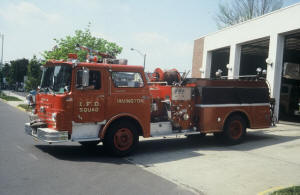
Another picture of the
Squad, this one taken at the Training Center on Mill Road.
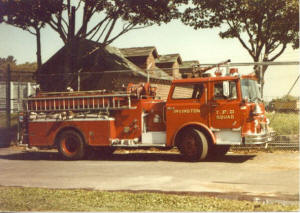
Engine 2
was identical to the Squad, and was at Station 2 on Coit Street.
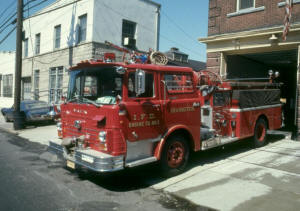
Both of
these Mack CF engines served the department and city well into the
1990’s, the last one being retired in 2001.
One of
Engine 2 and Truck 2, (The 1955 Pirsch) at a box on Grove Street.
(Courtesy of Ron Malloy)
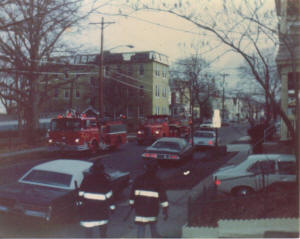
Engine 2
and RE-2 at Station 2; Looks like its cleaning day:
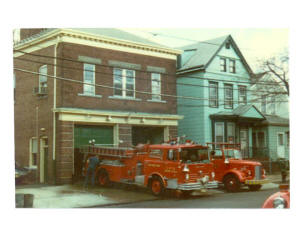
In 1974, the department
replaced the ALF ladder with an 85’ Pierce/Pittman Snorkel that went
into service as Truck 1. The department was experimenting with a new
lime yellow paint scheme and purchased several pieces of apparatus
in this color. Eventually it was decided to return to red as the
primary color for the department.
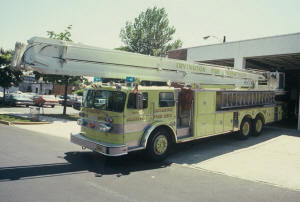
Another picture of Truck
1 in front of Station 1 that also shows Engine 3, a 1974 WLF which
we will see more of later. Notice the lens of the lights have
changed from blue to red.
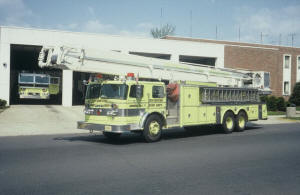
Here’s
Truck 1 in action at the Training Tower, with Rescue 1 in the right
corner.
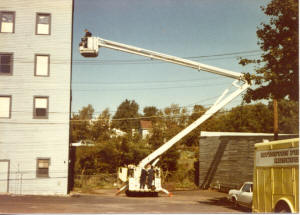
Another
set of shots from a drill:
This was
Rescue 1, a 1973 Diamond Reo/Wendel. First picture is at the
Training Tower, second at Station 1.
By the mid-70’s, it was
time to replace the Mack L engines, and the IFD got several Ward
LaFrance engines in the new white & lime paint scheme. Here is the
replacement for Engine 3, a 1974 Ward with a 1250 GPM capacity pump
and 500 gallon tank.
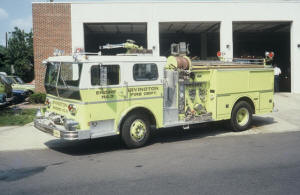
Another
shot at a job:
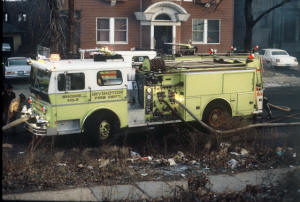
And here is Engine 4 on the apron at Station 4. This
rig was identical to E3:
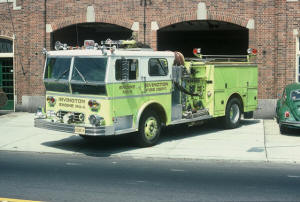
In 1973, the
department received a new Pirsch 100’ rearmount and designated it as
Truck 2:
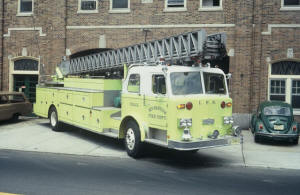
Truck 2 at
the Tower:
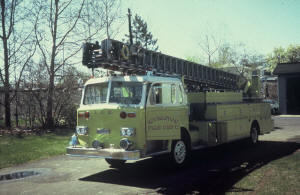
In 1978, a new Hahn
engine was purchased. Painted white over red, it marked the end of
the experiment with lime green and restored the department to its
traditional, classic look. This engine had a capacity of 1250 GPM
and carried a 500 gallon tank. It was a beautiful rig!
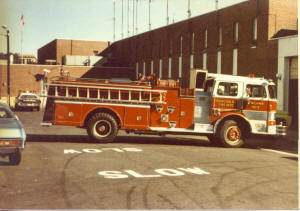
The new Hahn was designated Engine 4, and the 1974 WLF previously
designated E4 shifted to replace Engine 2
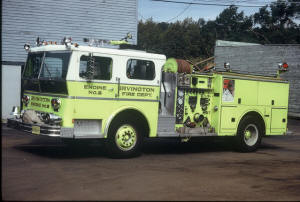
Eventually the lime Wards
were repainted red and renumbered with an Essex County prefix of 4.
Even the less than good looking Ward looks quite nice in red!
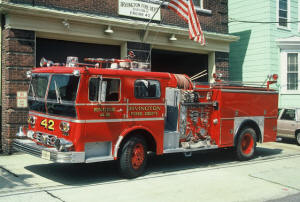
Fellow enthusiast and
former Irvington resident Ron Malloy has kindly forwarded to me some
photographs in his collection:
Truck 2,
the 1955 Pirsch TDA on Springfield Avenue
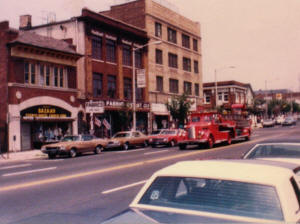
An
overhead shot of Engine 1 at a car fire
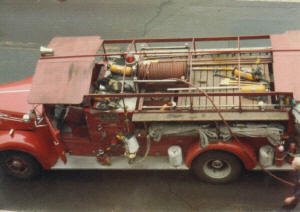
Truck 2 on
the road
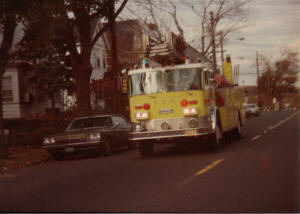
This concludes part 3 of
my retrospective on the Irvington Fire Department. The Mack and Ward
engines are gone now, originally replaced by E-Ones in the 80’s,
which were replaced by 2001 edition Spartans. Truck 1 is once again
an American LaFrance rig, this time a 1999 100’ rearmount, and there
is a sharp looking new E-One 100’ rearmount for Truck 2. At this
time, I am attempting to get Code 3 Collectibles to make a set of an
Irvington engine and ladder—any support you can add would be greatly
appreciated!
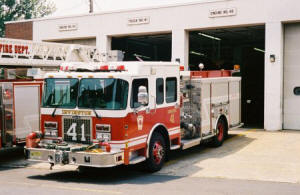 |
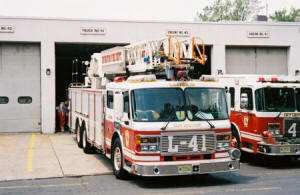 |
While the equipment has
changed since my father’s time on the job, the job of saving lives
and protecting property has not, nor has the character and makeup of
the men who work to protect the city from fire. In my visits,
conversations, and correspondence with the current members of the
department, the dedication, good humor, and generosity of everyone
from fireman to chief was readily apparent and brought back terrific
memories of my frequent visits to the firehouses and time spent with
my Dad and the other firefighters. Obviously the traditions and
history of the department have been passed to a new generation of
firefighters for the Irvington Fire Department.
If you have enjoyed this
article, please e-mail me your pictures and information and we will
continue to sound a “Second Alarm”.
Part 1 |
Part 2 |
Part 3 |
Part 4
|

